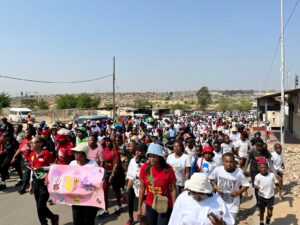While Beverly Hills is often hailed as the epicentre of cosmetic innovation, a South African clinic is making global waves with pioneering advancements in Afro-textured hair transplants, ushering in a new era of inclusive and culturally attuned hair restoration.
Alvi Armani South Africa, mandated by its Beverly Hills-based global headquarters to spearhead research in this specialised field, has developed cutting-edge techniques uniquely designed for the intricate structure of tightly coiled hair – a texture predominantly found across Southern Africa and beyond.
“For decades, hair restoration techniques focused primarily on straight hair, which tends to be simpler or more straightforward to treat, but left patients with Afro-textured hair underserved,” explains Dr Kashmal Kalan, Medical Director at Alvi Armani South Africa.
“But over the past five years, there’s been a greater push toward understanding and treating Afro-textured hair, which has seen the emergence of a number of new tools, technologies, and research.
“Leading this trend, Southern Africa presents some of the world’s most complex and challenging follicle patterns, with curl structures that are significantly tighter than those typically seen in Central Africa, North Africa, or among African-Americans. This has driven us to innovate – and it’s given us the opportunity to develop more highly specialised techniques specifically for Afro-textured hair types.”
Innovative techniques for Afro-textured hair
In response to these challenges, Alvi Armani South Africa has developed its own system for safely extracting and transplanting tightly coiled follicles.
“Understanding how the curl sits in the scalp, or how the follicle lies on its belly is crucial. We’ve pioneered our own system for extracting these types of follicles, and our surgical techniques can achieve very healthy survival rates for even the most tightly coiled follicles,” says Dr Kalan.
The clinic also uses specially designed surgical tools, including advanced punch instruments that allow for more accurate incisions and better alignment with the natural curve of the follicle root. This precision significantly reduces trauma and improves graft survival.
Recognising the delicate nature of Afro-textured follicles and the increased risk of keloid scarring on the scalp, the clinic takes a conservative approach when determining graft numbers to avoid compromising results.
“With very tightly curved hair, we might limit the procedure to 1,500 grafts compared to 3,500 in straight hair cases. While this may mean multiple sessions for some patients, this careful approach ensures the best possible outcomes.”
Its team further utilises the latest technologies, including an AI-driven tool that allows surgeons to assess curl patterns and follicle characteristics with unprecedented precision before surgery, producing remarkable successes for patients.
Global impact and leadership
Through its innovations, Alvi Armani South Africa has established itself as a global leader in Afro-textured hair restoration. Additionally, its collaboration with international partners within Alvi Armani’s network, as well as its access to cutting-edge technologies, has enabled the clinic to bring the latest advancements in the industry directly to Johannesburg.
“Being part of an international brand has given us access to tools and technologies that are years ahead of the local market. What’s happening in research centres such as Beverly Hills today, we can implement almost immediately here in South Africa, rather than waiting the years it may otherwise take for these techniques to reach or filter down to the local market,” he notes.
Beyond patient care, its experts are actively involved in training other surgeons, contributing to research, and leading conversations in international forums about Afro-textured hair restoration. This educational component is critical, as many practitioners around the world still lack experience in treating diverse hair types.
“We’re proud to help set new standards for inclusive hair restoration. We’re part of many global societies where doctors share information, and the techniques we’ve helped to develop here in South Africa are currently being adopted by clinics worldwide.”








